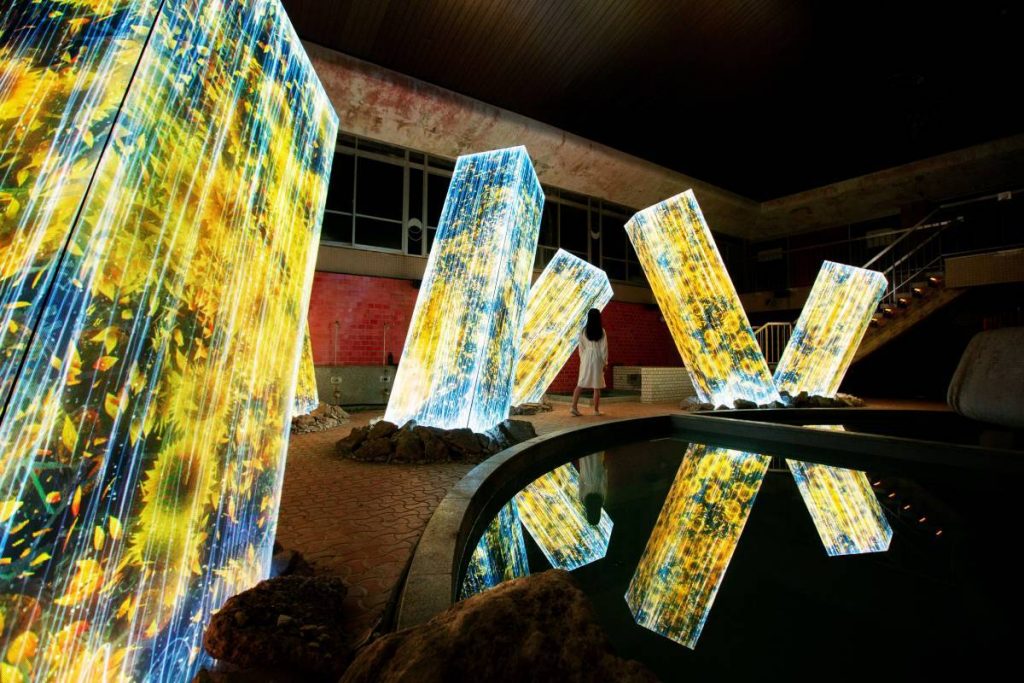asdfghjkll;’

function setup() {
createCanvas(320, 240);
background(220);
}
function draw() {
rect(10, 10, 40, 50);
}
[OLD FALL 2019] 15-104 • Introduction to Computing for Creative Practice
Professor Roger B. Dannenberg • Fall 2019 • Introduction to Computing for Creative Practice
asdfghjkll;’

function setup() {
createCanvas(320, 240);
background(220);
}
function draw() {
rect(10, 10, 40, 50);
}
Ever since I went to Japan the Summer of 2018, I became obsessed with teamLab’s breathtaking creations. teamLab is a creative group that likes to refer themselves as “ultra-technologists,” uniting many professionals like artists, programmers, engineers, CG animators, architects, and more to achieve their goal of creating new relationships between people through their digital art. For each project they create, they use software, 3D modeling, and sensing technologies.

teamLab has once again come out with an amazing project: “A Forest Where Gods Live” located in Takeo Hot Springs, Kyushu, Japan. What I admire most about this project is that it is much needed in this reality where climate change is prevalent, the Amazon is on fire, and nature is dying. This digital art installation will be an amazing reminder of the beauty in nature and to not lose hope in restoring God’s beauty.
For this specific project, their inspiration came from the Mifuneyama Rakuen Park created in 1845. Over the time the park has evolved to have beautiful forests, rocks, and caves. With their art, they want humans to better conceptualize time for periods longer than their own lives and have them become lost and immersed in the nature.

function setup() {
createCanvas(320, 240);
background(220);
}
function draw() {
rect(10, 10, 40, 50);
}

fakjdgkl;ewjfkl;aew
function setup() {
createCanvas(400, 400);
background(300);3
text("substitute text", 100, 20);
}
function draw() {
rect(40,40,50,80);
ellipse(40, 40, 50, 50);
}
fjdsifjdsifjasdofjdsj

function setup() {
createCanvas(320, 240);
background(220);
}
function draw() {
rect(10, 10, 40, 50);
}
function setup() {
createCanvas(200, 200);
background(220);
text("p5.js vers 0.9.0 test.", 10, 15);
}
function draw() {
rect(10,10,30,60);
}